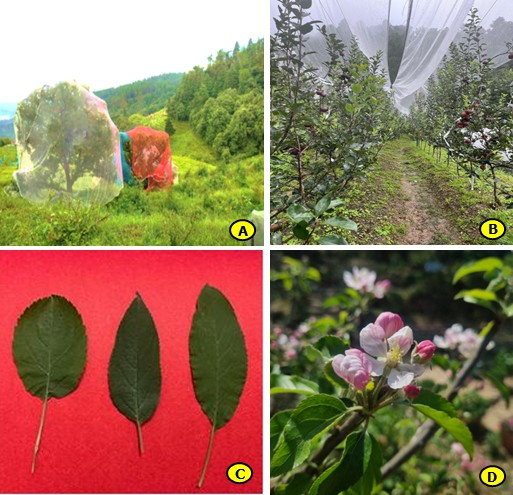Development of genomic resources, elite lines, and germplasm conservation on High-density rootstocks in apple
Apple (Malus domestica (Suckow) Borkh.) is a socio-economically important horticultural tree crop species. It contributes significantly to the economy of three major states (Jammu & Kashmir, Himachal Pradesh, and Uttarakhand) of India. However, national productivity is still low compared to other apple-producing countries, such as China. One major cause for this is the research gap, which is largely due to the lack of genetically upgraded planting material and the limited availability of supporting genetic tools such as markers, linkage maps, and trait architecture studies. Genetic improvement efforts for apple have been limited by the lack of inadequate identification of traditional cultivars and insufficient characterization of germplasm. Also, over-reliance on a few commercial cultivars has led to reduced diversity and vulnerability to climate change and diseases. To address these gaps, a long-term multi-institutional project, “Creating a Genomic Platform for Apple Research in India,” was initiated in 2010, with the present proposal representing Phase III. This DBT-supported network project aims to conserve apple genetic diversity in India. The project focuses on identifying elite genotypes from a novel F1 hybrid population (Red Delicious × Maharaji) for potential release as new cultivars, conserving genetic diversity through high-density rootstock plantations, and improving productivity and fruit quality to boost India's global competitiveness in the apple trade. The F1 mapping population has been established at three locations, i.e., University of Kashmir (Zakura Campus), the University of Jammu (Baderwah Campus), and GBP-NIHE, Almora (Suryakunj, GBPNIHE Almora, and Horticulture Garden Chaubattia).
Objectives:
1. Extensive phenotyping of clonal F1 plants based on flower and fruit quality traits
2. Biochemical analysis (TSS, pH, firmness, Taste, Flavor) of F1 plants
3. Disease resistance tests on the F1 population based on phenotypic and molecular markers
4. Nutritional and nutraceutical assessment of the fruits of the F1 population
5. Material exchange, photo-documentation, and report writing
Achievements:
1. Identified 400 apple cultivars/genotypes from Jammu & Kashmir, Himachal Pradesh, and Uttarakhand, including 62 genotypes from Uttarakhand.
2. Maintained 56 genotypes in germplasm repositories at GBPNIHE Almora, Government Horticulture Garden Chaubatia, Jammu University (Bhaderwah Campus), and Kashmir University (Zakura Campus).
3. Developed a hybrid mapping population of F1 plants from Red Delicious × Maharaji cross and planted them at three designated repositories.
4. Maintenance of germplasm (irrigation, manure, fungicide treatment, mapping, pitting, fencing, etc.), and documentation of various morphological and phenological parameters as per guidelines are ongoing.

Tree habit of different apple cultivars (A & B) and the foliage characteristics (Leaf shape, flower bloom C & D) at the Govt. Horticulture garden, Chaubattia, Uttarakhand


